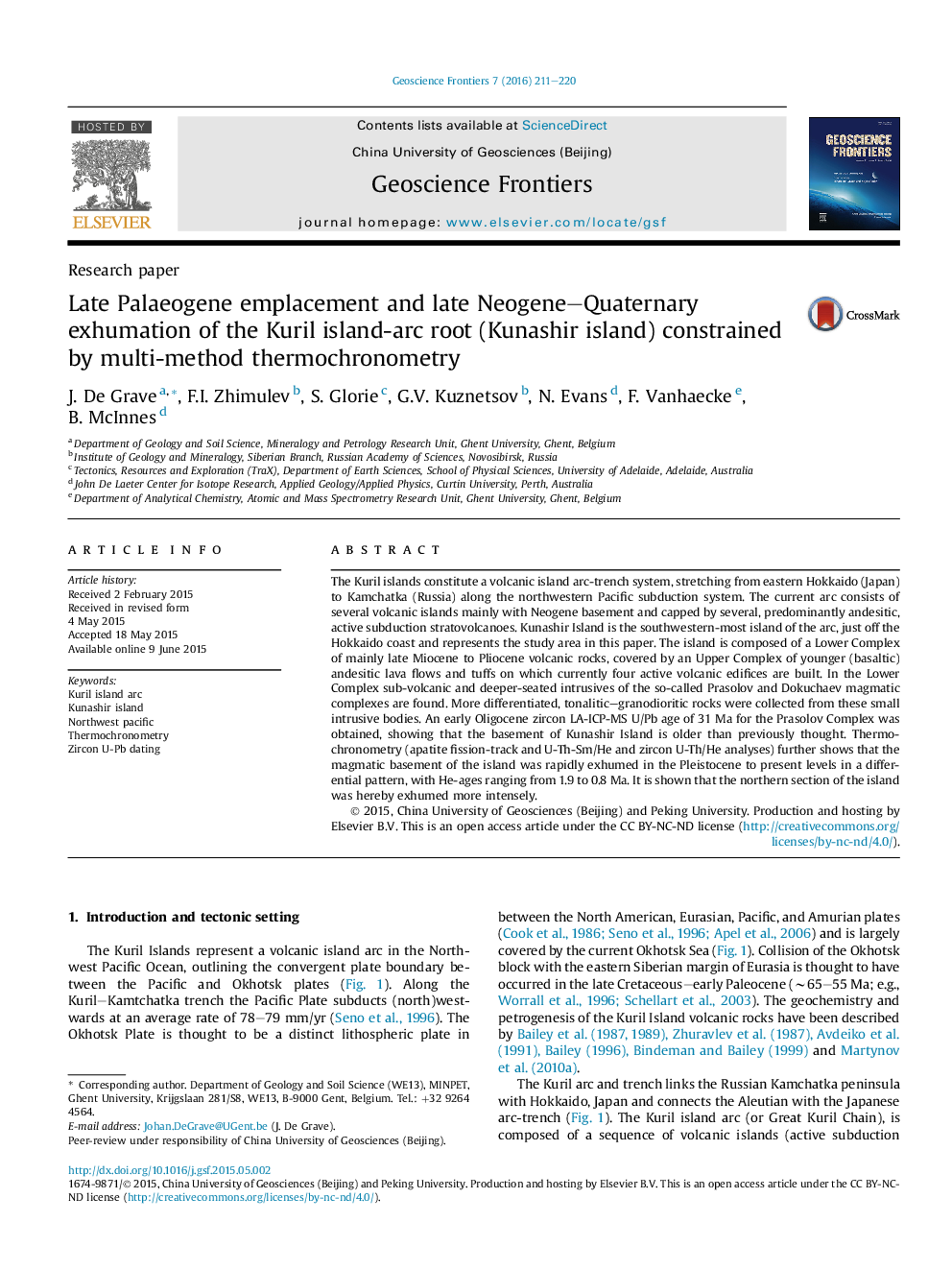| کد مقاله | کد نشریه | سال انتشار | مقاله انگلیسی | نسخه تمام متن |
|---|---|---|---|---|
| 4681540 | 1348856 | 2016 | 10 صفحه PDF | دانلود رایگان |
• New radiometric dating results of Kunashir Island in the Kuril volcanic arc.
• Zircon U/Pb dating of the Prasolov Massif yield and early Oligocene age of ~31 Ma.
• Quaternary cooling of Kunashir Island basement constrained by U-Th-Sm/He thermochronometry.
The Kuril islands constitute a volcanic island arc-trench system, stretching from eastern Hokkaido (Japan) to Kamchatka (Russia) along the northwestern Pacific subduction system. The current arc consists of several volcanic islands mainly with Neogene basement and capped by several, predominantly andesitic, active subduction stratovolcanoes. Kunashir Island is the southwestern-most island of the arc, just off the Hokkaido coast and represents the study area in this paper. The island is composed of a Lower Complex of mainly late Miocene to Pliocene volcanic rocks, covered by an Upper Complex of younger (basaltic) andesitic lava flows and tuffs on which currently four active volcanic edifices are built. In the Lower Complex sub-volcanic and deeper-seated intrusives of the so-called Prasolov and Dokuchaev magmatic complexes are found. More differentiated, tonalitic–granodioritic rocks were collected from these small intrusive bodies. An early Oligocene zircon LA-ICP-MS U/Pb age of 31 Ma for the Prasolov Complex was obtained, showing that the basement of Kunashir Island is older than previously thought. Thermochronometry (apatite fission-track and U-Th-Sm/He and zircon U-Th/He analyses) further shows that the magmatic basement of the island was rapidly exhumed in the Pleistocene to present levels in a differential pattern, with He-ages ranging from 1.9 to 0.8 Ma. It is shown that the northern section of the island was hereby exhumed more intensely.
Figure optionsDownload as PowerPoint slide
Journal: Geoscience Frontiers - Volume 7, Issue 2, March 2016, Pages 211–220
